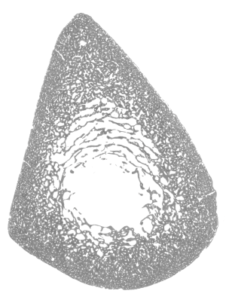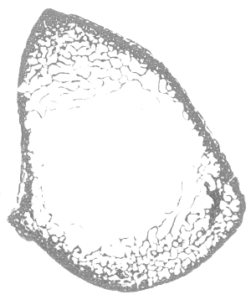


Osteoporosis, a global health challenge
Osteoporosis accounts for more days in the hospital than breast cancer, heart attack, diabetes, and other diseases. Due to this fact, the cost that osteoporosis imposes on healthcare budgets is staggering. The economic burden of incident and prior fragility fractures in 2019 in Europe was estimated at €57 billion* (±US$64 billion), while in 2015, the United States spent US$20 billion. A staggering total annual cost of well over US$80 billion and growing.
80 billion USD
global healthcare costs
200 million
affected worldwide
3 seconds
a fracture occursEarly detection is vital
Current measurement methods cannot detect the onset of osteoporosis but rather approximate the bone-loss associated relative fracture risk, typically at advanced stages of the disease progression. Early detection is vital because the highest fracture incidence is not seen in people diagnosed to have osteoporosis but in those diagnosed to be healthy or osteopenic (losing bone mass), rendering osteoporosis one of the most underdiagnosed diseases in the western world. Early detection technology to overcome this clinical need was not available, until today.

Healthy bone
Bone growth and resorption in balance

Disbalanced bone remodelling
pore size: ↗ ↗
trabecular network: ↘
cortical thickness: ↘

Compromised bone architecture
pore size: ↗ ↗
trabecular network: ↘
cortical thickness: ↘ ↘
Osteoporotic Fractures Affect Millions
Osteoporosis is a skeletal disorder characterized by altered bone material properties that lead to an increased risk of fractures. Overall, osteoporotic bone fractures contribute to significant individual and socioeconomic burdens worldwide. These burdens include increased morbidity, mortality, diminished quality of life for patients, as well as substantial societal costs.
*source: Kanis et al. (2021); Siris et al. (2014); McClovsky et al. (2022)
Ultrasound at new heights
Today’s worldwide bone health crisis calls for an easy & accurate radiation-free method to address the urgent need to bridge the diagnosis gap.
The unique POROUS technology measures cortical thickness, pore-size distribution, and other physical properties of the cortical bone, aiming to prevent millions of fractures.
Microstructure analysis of the cortical bone
The POROUS solution uses quantitative ultrasound (QUS) technology with patented intelligent algorithms being able to measure the cortical bone quality to a microscopic pore level without radiation hazards. The intelligent algorithms overcome the limitations of ultrasound imaging in the bone where waves are scattered, making it impossible to analyze the cortical bone (micro) structure. This unique technology can measure for the first time not only the cortical thickness, but also the microscopic pores and pore-size distribution in human cortical bone of the peripheral skeleton.
Prevention of osteoporosis becomes a reality
Due to the use of ultrasound systems (mobile by design), this solution can be used anywhere in- or outside the hospital, e.g., primary care, elderly homes, or even pharmacies. It creates the ability to use the technology for prevention (screening); being able to diagnose patients already at the onset of osteoporosis.
Safe
Safe and robust ultrasound measurement with no X-ray radiation
Accurate
Accurate ultrasound measurement of the cortical bone in 3D, down to the pore size distribution level
Cost-effective to use
Cost-effective solution that will be accessible to all
The POROUS core team
We are hiring!
To keep track with POROUS rapid growth and developments, we are looking to fill several positions with highly skilled and driven experts. Click on the vacancies below to read the full profiles.


